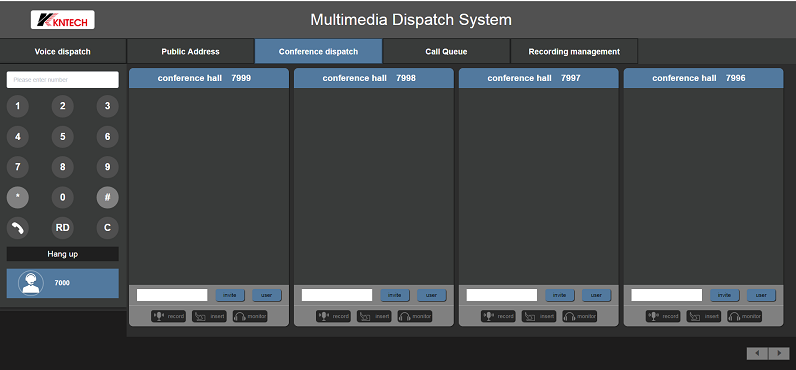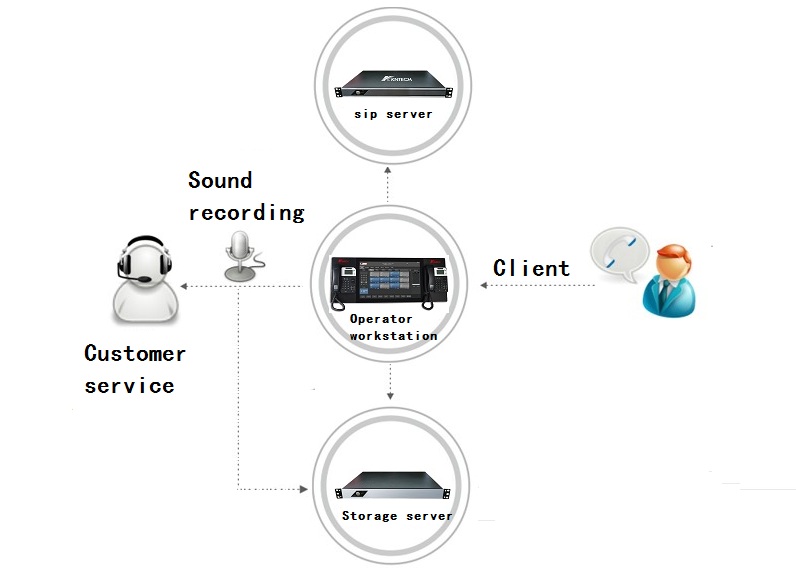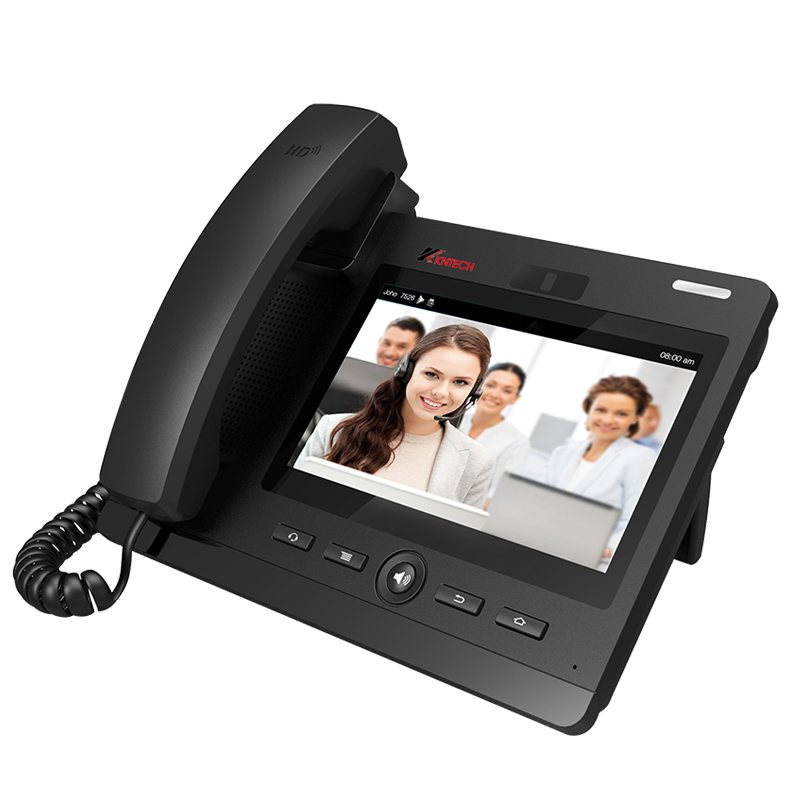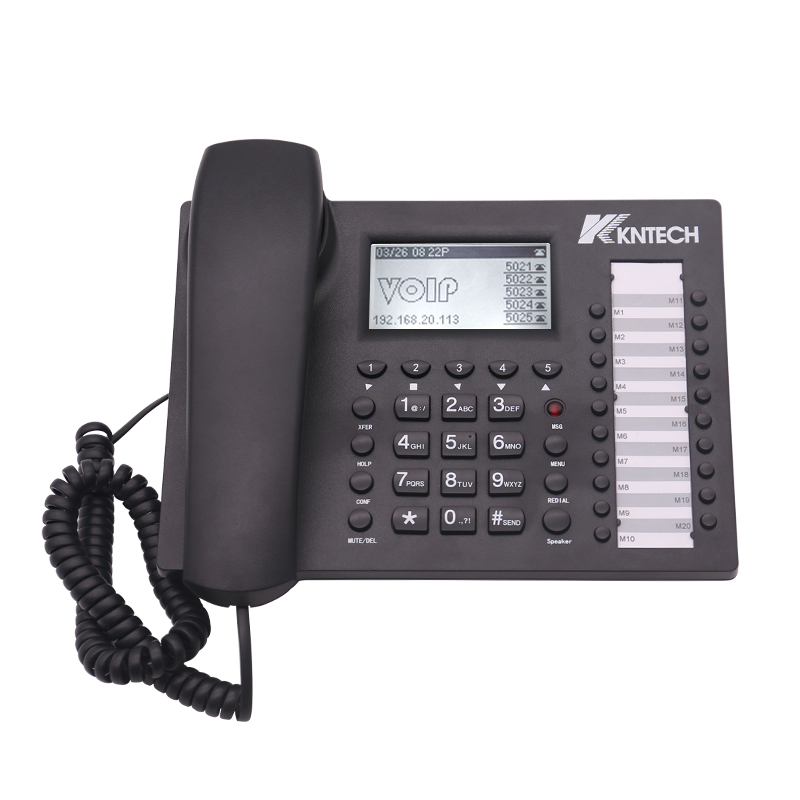
The Ip pbx telephone system is an internal telephone communication system based on an ip network and an ip pbx server. Nowadays, the ip pbx telephone system is not only used inside ip pbx system, but also widely used in industrial and public product emergency dispatch systems.
Ip pbx telephone system system diagram for use in commercial telephone systems

Ip pbx telephone system system diagram for subway emergency intercom system

The Ip pbx telephone system is an integrated system based on the ip network. The whole system uses an integrated core sip server, and the terminal uses an ip phone to connect to the entire telephone system through a network switch. The whole system adopts ip network, the communication cost is low, and multimedia functions can be realized. For example, ip pbx software enables call waiting, call forwarding, multi-party conferencing, and call recording.

First of all, we need to set up the entire ip pbx telephone system. In the phone that has been registered in the phone server, we can use the GUI page to view all the phones in the console interface of the phone operator console. We can group and assign the phones. According to the needs, we can assign the phone registered to the sip server, which can be divided into dispatchers, managers and so on. We can set up automatic call forwarding, manual transfer, and call queuing. When a phone call comes in, we can select the dispatcher to answer the call, or set the dispatcher to idlely answer the call.
The dispatch console with ip pbx software in the Ip pbx telephone system provides powerful, easy-to-use IVR (Interactive Voice Response) and call queue auto attendant telephony systems. Users can customize the IVR process according to their needs. Through its own core software platform, it provides users with IVR functionality, eliminating the need for additional IVR servers and corresponding boards, reducing investment expenses. Through the streamlined interface operation, users can easily customize their unique IVR process. Allows the caller to be efficiently transferred to the attendant console or the appropriate agent for better service.
The user plays the welcome message and the prompt tone after dialing the switchboard. The IVR process can be customized as needed and supports multiple layers of IVR. The trigger actions in the IVR include: extension, ring group, conference room, queue, fax, auto attendant, voicemail, and hang up. The call queue means that the incoming call is evenly distributed to each agent in the queue group according to actual needs. When calling to the queue group, the call can be assigned to each available agent in turn, and assigned to each agent at any time. The incoming call can be effectively assigned and managed. Make full use of system resources and improve system processing capabilities.
Ability to assign future words to agents or extensions according to strategy. Incoming calls can be queued and timed out after waiting for a timeout. The traffic distribution policy includes all ringing, ringing ringing, minimum ringing, and random ringing. The number of queues can be configured, waiting for the user to listen to the music, waiting for the timeout processing, no answer to the specified extension, playing the prompt tone, hanging directly.

The built-in telephone recording function of Ip pbx server combines advanced digital signal processing technology and IP voice technology to provide a powerful technical guarantee for the supervision service process. The recording system can record calls, record conferences, and manage operations such as querying, downloading, and deleting recorded files.
After the system enables the recording function, you can set the recording to the specified extension. When the extension makes internal and external calls, the system will record the call. After the call ends, the generated recording file will be stored remotely to the system. You can also upload recording files by TFP. The system uses IP voice technology to realize voice collection, and monitors and records multiple channels in real time. It does not need to add traditional recording cards and corresponding recording software to save investment in recording equipment. Flexible and convenient recording management, you can log in to the system for recording management as long as it can communicate with the ip pbx telephone system in any network. The automatic recording management is simple. After the recording function is enabled, the call recording is automatically completed, easy to configure, and the maintenance amount is small. Large storage capacity, using the peripheral storage server, can achieve high traffic storage, recording files for long-term storage.

The Ip pbx telephone system provides powerful multi-party conference conferencing. All participants can join the conference via intercom, traditional phones, mobile phones, IP phones, softphone terminals, etc., each meeting participant, no matter where they are. You can join the conference by dialing a pre-agreed conference phone number and entering the corresponding password.
Reduce meeting costs: The teleconferencing feature allows you to participate in meetings anytime, anywhere, completely free of charge, eliminating the need for companies to rent or build complex conferencing systems, significantly reducing meeting costs and reducing travel expenses associated with meetings.
Multi-terminal access: IP phones, soft phones, analog phones, smart phone phones, ordinary mobile phones, etc. A variety of meeting forms: the system supports instant meetings, scheduled meetings, and various forms of meetings. Support for password meetings and passwordless conferences. A variety of methods for establishing a conference: Users can establish a conference through a telephone terminal, or access the conference through a Web self-service system and an intelligent soft terminal.
.jpg)
Operator console center

ip pbx

Office telephone

Speed dial telephones
Thank you for reading, if you have any questions or needs, please contact us!
EMAIL: marketing@koontech.com, we will reply you immediately
Previous:What is A Proxy Server?
Next:IP PBX Software